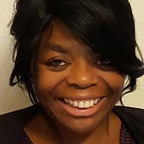Black history month is back! — Let’s celebrate Valerie Thomas, the early 3D technology inventor.
What is Black History Month?
Black History Month [01] consists of a series of events aimed at celebrating black individuals who have made contributions to any field, be it scientific, social, or other.
It originates in the US where it is officially recognised, as it is in Canada, the UK, and Ireland.
It starts on February 1st and end on March 1st 2022, in most part of the world (In UK or Ireland, it will be held in October).
Is it a good idea?
There is some debate whether declaring one month “ Black History Month “ is actually a good idea.
Critics would argue that a ‘Black History Day’ would come, generate a significant ‘awareness-effect’ and go and the increased awareness caused would decline as rapidly as it rose.
A ‘Black History Year’, however, would (we suspect) become background noise and fail to generate any lasting increase in awareness.
Optimists that we are, we like to think that a ‘Black History Month’ is probably a good compromise in terms of gained awareness vs. toil.
In the words of the 38th US President, Gerald Ford, we invite you to
“seize the opportunity to honour the too-often neglected accomplishments of Black people in every area of endeavour throughout [our] history.”
Because 2022, is the International Year of Basic Sciences for Sustainable Development, and also because I am a scientist, I am going to focus on my peers.
Click below to know more about the International year of Basic Sciences for Sustainable development.
This week: Let’s celebrate Valerie Thomas!
Valerie Thomas [02] was born in the US in 1943.
Her teachers recognised a gift for physics and maths in her and encouraged her to pursue education in STEM.
This led her to Morgan State University (Baltimore, Maryland), a historical black institution. She was one of the two women studying physics.
There, she excelled, and she graduated with the highest honours in physics in 1964, being one of the two women in physics.
She took up a position in NASA in 1965 as a mathematician and data analyst.
And then went on holding high level positions, such as head of the Large Area Crop Inventory Experiment (LACIE), a collaboration between NASA, NOAA, and USDA in 1974, or managing the Space Physics Analysis Network project (1986–1990).
She walked her way up to associate chief of the Space Science Data Operations Office.
Working in NASA’s Landsat Program (an image processing system that will allow satellites to transmit images from space), she developed the digital media formats used in the first Landsat satellites.
Her work was instrumental in the pursuit of being able to visualize Earth from space.
She is perhaps best known for her invention, which she called the ‘Illusion transmitter’ and for which she was granted a patent in 1980.
What is the “Illusion transmitter?
To understand her invention, you need to understand the difference between flat mirror and concave mirror.
A flat mirror make reflected objects appear in or behind the mirror.
A concave mirror makes them appear in front of it, which provides the illusion that they exist in 3D.
Her invention consists of ‘two parabolic mirrors to transmit 3D illusions of an object by use of a camera trained on the first mirror, which then sends video signals to a projector aimed at the second mirror’[03].
It is what we called an early 3D technology.
This invention is still used at NASA today to transmit images from space to Earth, and has also been instrumental in the development of 3D televisions and MRI scanners. [04, 05]
During her time at NASA she also managed the National Space Science Data Centre, a small computer network we would nowadays regard as ‘intranet’, which later grew into the Space Physics Analysis Network.
This would later become one of the nuclei of the internet as we now know it.
She retired in 1985.
Throughout her career and after her retirement, Valerie Thomas has been trying to give back to the community by speaking to school kids and students of all age groups.
She has also been working with the National Technical Association (NTA) and Women in Science and Engineering (WISE), programs which encourage minority and female students to pursue science and technology careers.
01) https://en.wikipedia.org/wiki/Black_History_Month/, last accessed 2022.02.01
02) https://en.wikipedia.org/wiki/Valerie_Thomas/, last accessed 2022.02.01
03) https://en.wikipedia.org/wiki/Illusion_transmitter/, last accessed 2022.02.01
04) https://www.popularmechanics.com/space/g27505368/women-in-space/, last accessed 2022.02.01
